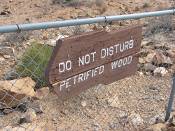Spruces (Picea)
What kind of species are you dealing with.
Norway_spruce Picea_abies | Serbian_spruce Picea_omorika | Blue_spruce Picea_pungens | Oriental_spruce | Sitka spruce | Black_spruce (foreign)
Spruces are pretty hard to keep apart. Luckely the most common species are not very hard. Spruces have needles that stand alone, not in bunches and leatherish/woody cones that hang from the branches.
A simple, but not always accurate key is below:
- Needles all green, no white lines on the underside --> Norway_spruce Picea_abies
- Needles really blue --> Blue_spruce Picea_pungens
- Tree very narrow, branches mostly upward --> Serbian_spruce Picea_omorika
- Needles very short and blunt --> Oriental_spruce
- Needles thin and sharp, cones until 5 cm, like light-brown paper --> Sitka spruce
Below a more elaborate description.
-
1. Most common spruce is the Norway_spruce.
The species commonly used as christmastree. 50 up to 90% of fir/spruce in the forests is this species. (rest is often Douglas fir). Also seen in gardens. Needles are all green, stiff and they sting, 1 to 2 cm's long. Individuals can differ a lot between them. Some have beautifully brown branches, some more greyish and so on. Also the bark, which is usually smooth with little fishures, can occasionally be a bit more rough.
Cones are long "cigars" light-brown. Can be closed or opened. There are cross-breeds between this species and sitka spruce and blue spruce. Varieties exist like weeping forms.
-
2. Second most common species is only seen in gardens.
Serbian_spruce.
This species has white lines on the underside of the needles, but so do most other species. Needles are blunt and do not sting.
This species is very narrow, but not always. Branches are uplifted, so you can see a white "glow" because you can see beneath its needles.
Bark, if you can see it, has rough scales. Cones are mostly high in the tree, and are small, 4 upto 6 cm, but also smooth small cigar-like. -
3. Also in gardens you can find the almost always very blue Blue_spruce .
Recognizable by its blue coloured needles, that sting like hell, paper-like light-coloured cones and a very rough bark. There are numerous varieties, form very small to very large.
Needles are very stiff and sting hard. Have a white line underneath, 2.5 to 3.5 cm (varieties often smaller needles). Cones are little shorter than Norway spruce's cones: 6 to 10 cm.
Alas there is also a green form that might be hard to distinguish from the Norway spruce. I have never seen it as far as I know. Let me know if you have. - 4. Only in gardens and arboreta you find the Oriental_spruce. Easily recognizable by its extremely short needles that are blunt. Cones can hang low in the tree and have resin over them. Bark is smooth but gets some small scnales. Rare tree.
-
5. Needles are about 2 cm, thin and sharp. Underneath needles are white with a green line in the middle. Cones are paper-like and 5 cm (small).
































